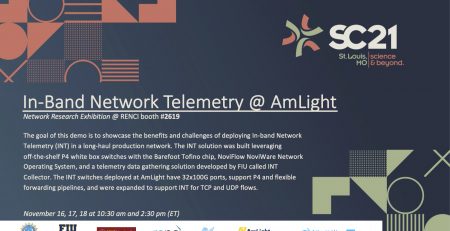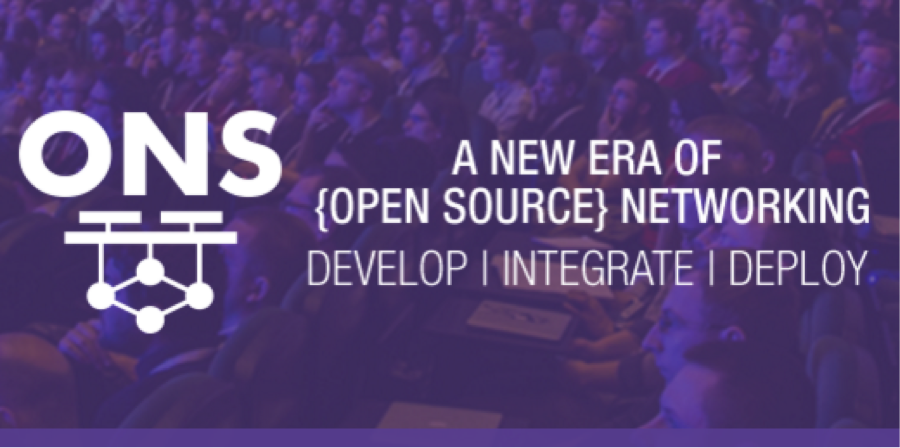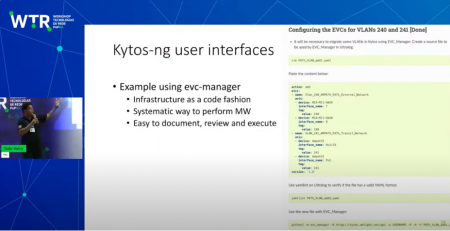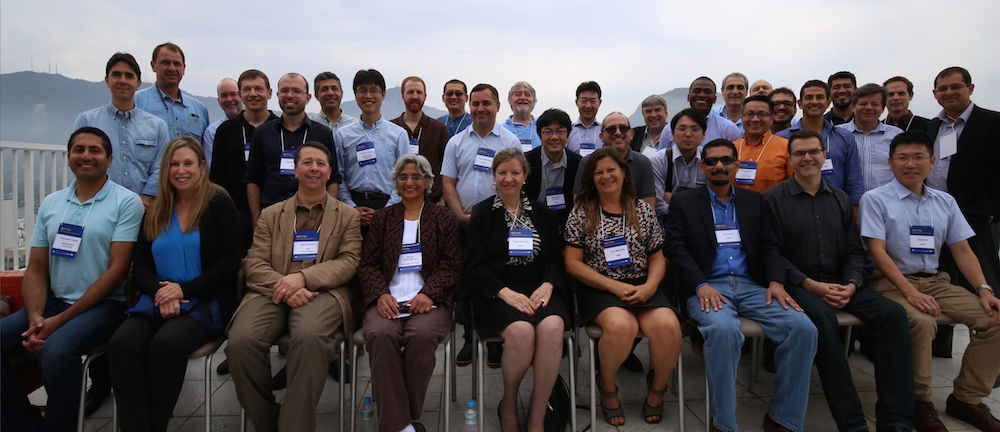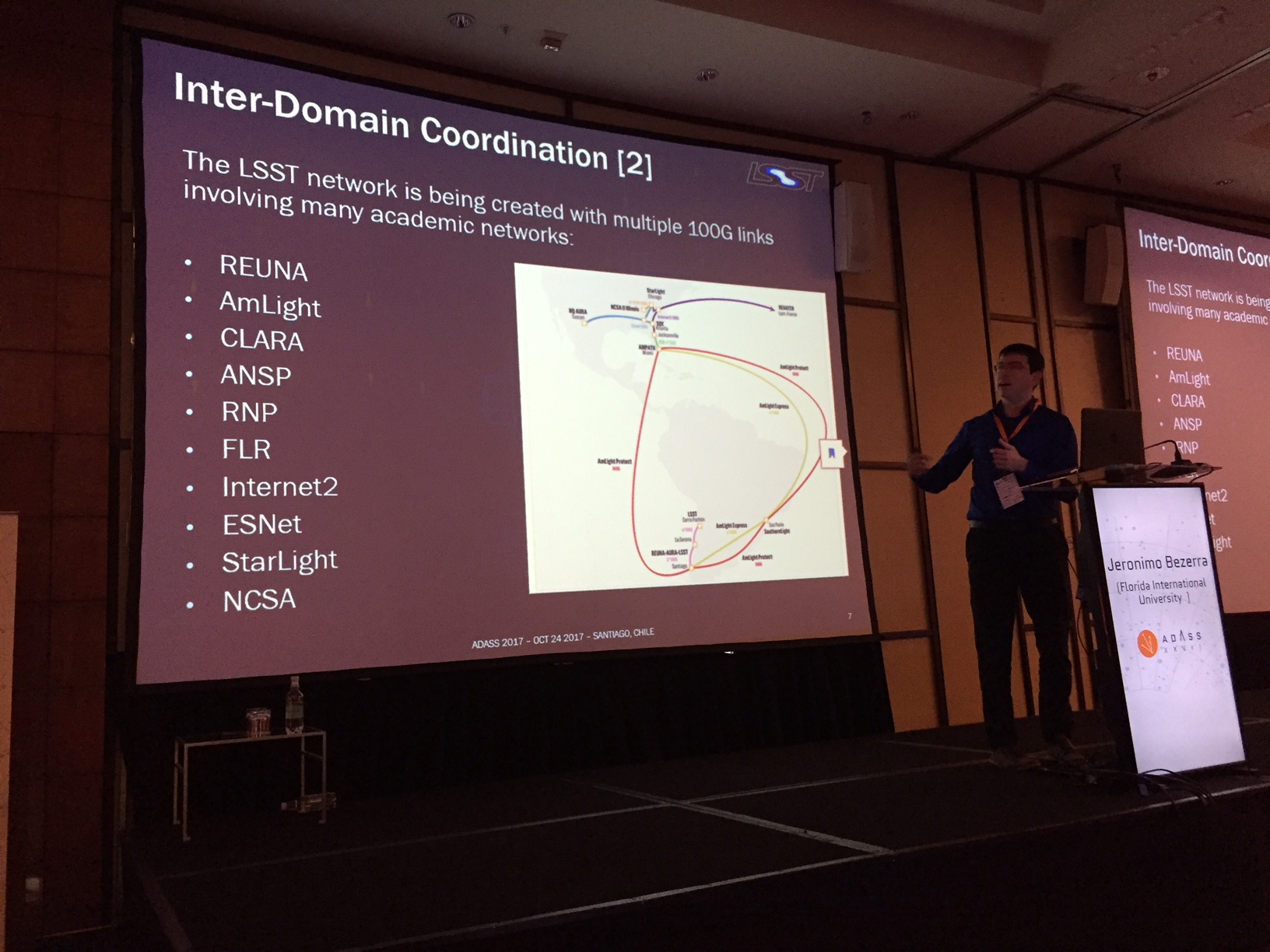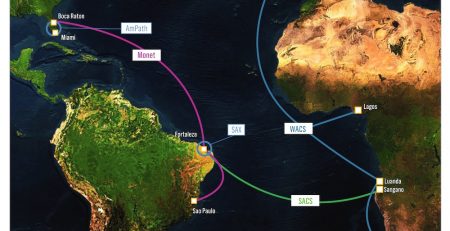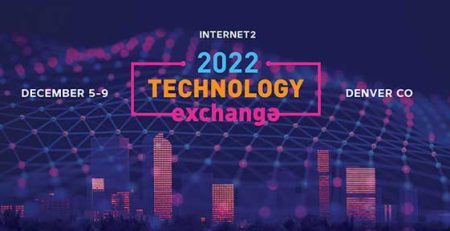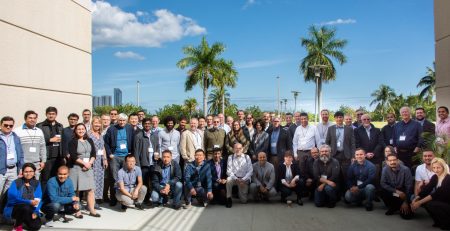AmLight Express and Protect demonstrates the utility of the collaborative initiative to connect South Africa via AmLight-SACS
Miami, Florida, March 30, 2020 – On March 1, 2020, we announced AmLight Express and Protect interconnects three continents by activating 100G end-to-end links between the U.S., Brazil and South Africa. Now this Research & Education networking advancement is showing it’s worth. The West African Cable System (WACS) suffered a significant fiber cut on Friday, March 27, at the worst possible time for South Africa. Currently, people are relying heavily on the Internet for work and communication in general during a three-week national lockdown. The cut is between Portugal and the UK. The AmLight-SACS project (NSF OCI-1937344) is successfully utilizing a 100G pathway using the South Atlantic Cable System (SACS) and West African Cable System (WACS) at the Angola connection point, to connect Africa from ZAOXI open exchange point in Cape Town, South Africa to the AmLight-ExP network in Fortaleza, Brazil to the United States at the AMPATH Open Exchange Point in Miami, Florida and to all of the Western Hemisphere. Furthermore, traffic destined for the UK, other points in Europe can be routed across the North Atlantic once it reaches AMPATH.

The majority of the Research & Education network traffic from South Africa destined to the Americas is currently routed via the recently activated AmLight-SACS connection.
Figure 1 shows the AmLight ExP locations map also available online here https://my.amlight.net/. The AmLight network engineering team in the U.S and Brazil is monitoring current traffic as it propagates through this South Atlantic route. In the meantime, TENET is receiving peering traffic (NOTA and FL-IX).
“TENET offers intelligently engineered infrastructure for the Research and Education community of South Africa. A recent cut in the North Atlantic on the WACS cable allowed us to dynamically use a new protect path- directly from Africa to South American, then to the U.S. This link was recently put into place in partnership with the AmLight consortium, including FIU and RNP. Southern Hemisphere connectivity contributes greatly as part of our focus on redundancy. We are excited both for enhancing the diversity of protection options this affords us, and the opportunities for closer collaborations”, said Duncan Greaves, CEO of the Tertiary Education and Research Network of South Africa.

AmLight-SACS has succeeded because of the strong and consistent collaboration between the partners: Florida International University (FIU), Rede Nacional de Ensino e Pesquisa (RNP), Tertiary Education and Research Network of South Africa and South African National Research Network (TENET/SANReN), and Angola Cables. Linking the U.S., Brazil and the nations of Africa to support robust networking using the diversity of a new South Atlantic route is the culmination of 3 years of careful planning and execution to provide a diverse networking path for all collaborators”, said Heidi Morgan, Co-Principal Investigator and lead for the AmLight-SACS project.
About:
AmLight ExP: AmLight Express and Protect (ExP) implements a hybrid network strategy that combines optical spectrum (Express) and leased capacity (Protect) that builds a reliable, leading-edge diverse network infrastructure for research and education. AmLight ExP operates high-performance network links connecting Latin America to the U.S., funded by the National Science Foundation (NSF, award #OAC-1451018); with significant investments from the Academic Network of São Paulo (ANSP), Rede Nacional de Ensino e Pesquisa (RNP), and the Association of Universities for Research in Astronomy (AURA). The total bandwidth provided by AmLight ExP between the U.S. and South America has reached more than 680 Gigabits per second in aggregate capacity.
AMPATH: Florida International University’s Center for Internet Augmented Research and Assessment (CIARA), in the Division of IT, has developed an international, high-performance research connection point in Miami, Florida, called AMPATH (AMericasPATH). AMPATH extends participation to underrepresented groups in Latin America and the Caribbean, in science and engineering research and education through the use of high-performance network connections. AMPATH is home to the Americas Lightpaths Express and Protect (AmLight-ExP) high-performance network links connecting Latin America to the U.S., funded by the National Science Foundation (NSF), award #OAC-1451018; and the AtlanticWave-SDX: NSF Award# OAC- 1451024, 2015-2020, IRNC: RXP: AtlanticWave-Software Defined Exchange: A Distributed Intercontinental Experimental Software Defined Exchange (SDX).
Angola Cables: Angola Cables is an IT Solutions multinational focused on selling data infrastructure solutions, connectivity and cloud services for IP’s and ISP’s requiring digital connections and services in the corporate sector. The company currently operates the SACS, Monet and WACS cable systems and manages two data centers – AngoNAP Fortaleza in Brazil and AngoNAP Luanda in Angola. It also manages Angonix, one of Africa’s top five Internet Exchange Points. With its robust network, Angola Cables directly connects Africa, Europe and the Americas with established partnerships to connect to Asia.
AURA: The Association of Universities for Research in Astronomy (AURA) is a consortium of 40 US institutions and 4 international affiliates that operates world-class astronomical observatories. AURA’s role is to establish, nurture, and promote public observatories and facilities that advance innovative astronomical research. In addition, AURA is deeply committed to public and educational outreach, and to diversity throughout the astronomical and scientific workforce. AURA carries out its role through its astronomical facilities.
FIU: Florida International University is an urban, multi-campus, public research university serving its students and the diverse population of South Florida. FIU is committed to high-quality teaching, state-of-the-art research and creative activity, and collaborative engagement with its local and global communities. Fostering a greater international understanding, FIU is a major international education center with a primary emphasis on creating greater mutual understanding among the Americas and throughout the world. FIU is Miami’s first and only public research university, offering bachelor’s, master’s, and doctoral degrees. Designated as a top-tier research institution, FIU emphasizes research as a major component in the university’s mission.
RNP: The Brazilian Education and Research Network (RNP), qualified as a Social Organization (OS) by the Brazilian government, is supervised by the Ministry of Science, Technology, Innovation and Communications (MCTIC), and is maintained through the Inter-Ministry RNP program, which also includes the Ministries of Education (MEC), Health (MS), Citizenship and Defense (MD). The first Internet provider in Brazil with national coverage, RNP operates a high-performance nationwide network, with points of presence in all 26 states and the national capital, providing service to over 1200 distinct locations. RNP’s more than four million users are making use of an advanced network infrastructure for communication, computation and experimentation, which contributes to the integration of the national systems of Science, Technology and Innovation, Higher Education, Health and Culture.
ANSP: The Academic Network of São Paulo (ANSP) provides connectivity to the top R&E institutions, facilities, and researchers in the State of São Paulo, Brazil, including the University of São Paulo, the largest research university in South America. ANSP directly connects to AMPATH in Miami. ANSP also provides connectivity to a number of special infrastructure projects like GridUNESP, one of the largest computational clusters in Latin America, supporting interdisciplinary grid-based science.
TENET / SANReN: The Tertiary Education and Research Network of South Africa (TENET), and the South African National Research Network (SANReN) jointly form South Africa’s NREN. TENETis the operator of the network that is deployed jointly by the two organizations. SANReN is a component of the National Integrated Cyberinfrastructure System (NICIS), located in the CSIR, and is responsible for the design, acquisition and roll-out of national and international capacity for the South Africa NREN, as well as the development and incubation of advanced services. The NICIS also includes the Centre for High Performance Computing (CHPC) and the Data Intensive Research Initiative of South Africa (DIRISA).
UbuntuNet Alliance: UbuntuNet Alliance is a regional research and education network in eastern and southern Africa, that works with its member NRENs, and coordinates and collaborates with peer regional R&E networks, such as GEANT and RedCLARA. The UbuntuNet Alliance seeks to extend the capacity and resilience of its broadband research and education backbone network with high-speed connections to NRENs worldwide and the Internet.
WACREN: West and Central African Research and Education Network (WACREN) is a regional research and education network serving the west and central region of Africa. The WACREN’s mission is to build and operate a world class network infrastructure, develop state of the art services, promote collaboration among national, regional, international research and education communities and build the capacity of the REN community.
USC/ISI: The USC Information Sciences Institute (ISI) is a component of the University of Southern California (USC) Viterbi School of Engineering, and specializes in research and development in information processing, computing, and communications technologies. ISI is a world leader in research and development of advanced information processing, computer and communications technologies. ISI work ranges from theoretical basic research, such as core engineering and computer science discovery, to applied research and development, such as design and modeling of innovative prototypes and devices.


